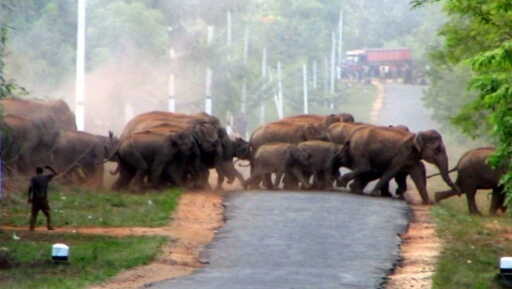COLOMBO — Playful 7-year-old Thinuli loved accompanying her father to his chena fields in a remote village in Hambantota, in Sri Lanka’s deep south. In August, she joined him as usual, eager to help in the field before the heat of the day. But in a tragic instant, an elephant charged out of the nearby thicket. Her father tried to save her, but it was too late. The elephant trampled Thinuli to death and left her father critically injured before retreating to the forest. Two months later, in October, tragedy struck again, but differently. A pregnant female elephant was found shot dead in a nearby area, her body lying near a crop field she had likely entered in search of fodder. The fatal bullet, reportedly fired by a farmer defending his field, claimed not only her life but also that of her unborn calf. These twin tragedies, occurring just kilometers apart, illustrate the worsening struggle between humans and elephants in Hambantota. Both humans and elephants are fighting for survival in a shrinking landscape, but only humans have a voice to demand solutions. Under growing pressure to address the escalating human-elephant conflict (HEC), authorities in Hambantota have recently launched another large-scale elephant drive, aiming to push elephants from human settlements into designated protected areas. “With several mega development projects in Hambantota, HEC in the area has gradually increased. We must protect both elephants and humans, so this operation was launched on humanitarian grounds,” said Hambantota district parliamentarian Nihal Galappaththi, who has…This article was originally published on Mongabay
From Conservation news via this RSS feed


